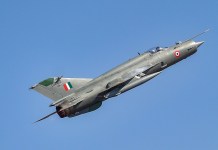The Russian military successfully used dozens of kamikaze drones, also known as loitering munitions, during its counterterror operations in Syria last year.
“Last year, for testing in combat conditions, an experimental batch of Kalashnikov-developed Lancet loitering ammunition was delivered to the Russian group of forces in Syria.
These drones have already inflicted several dozen high-precision strikes against terrorists. The high efficiency of the new complex has been demonstrated,” a person from the Russian military-industrial complex told RIA-Novosti.
Russian drone manufacturer ZALA claims to be developing loitering munitions to act as an “aerial minefield”.
The immediate trigger for this could be the failure of air defense systems against Turkish drones during the Nagorno-Karabakh last year, according to David Hambling writing for Forbes.
Small, loitering munitions might offer a possible solution here, he writes.
Russia is lagging far behind its competitors in developing unmanned aerial systems. Israel and the United States have now pioneered the art of drone strikes and China boasts the largest drone arsenal in the world. Even Turkey is becoming the new ‘drone superpower’.
In contrast, Russian manufacturers have always struggled to keep up pace with the modern world and maintaining global dominance in the UAV domain.
Nevertheless, the Russian Special Forces have been operating loitering munitions like ZALA’s Kub and the iconic Lancet-3 with cruciform-shaped wings, to a high degree of operational effectiveness in Syria.
ZALA is the country’s premier drone development company under Kalashnikov Concern, part of the state-run Rostec Corporation. And after developing these munitions, it is now planning for a loitering munition that would ‘patrol’ its own 20-mile square box to hit any enemy drone entering that area- making it an effective ‘drone minefield’.
A video released by the company shows a Lancet-3 loitering munition hitting an enemy UCAV (appears to be a Turkish Bayraktar TB2). This new loitering drone could patrol the airspace “over tens of hours”, which is however doubtful considering the battery endurance of only 40 minutes in current Lancet drones.
However, this could be achieved by sending the drones up in the air by turns, in a similar fashion to the multiple MQ-9 Reaper UAVs used by US Air Force to carry out 24/7 reconnaissance over an area for weeks.
ZALA is working on developing more endurance drones and rolled out its 421 surveillance UAV with a new hybrid engine capable of achieving 12-hour endurance. Developments in solar-powered flight and related systems would give an added advantage to kamikaze drones.
The company, however, has not yet given any timeframe for making such kamikaze drones.




